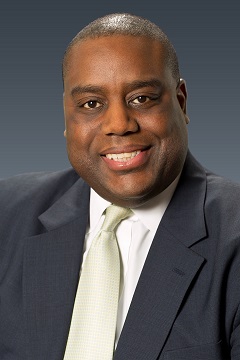Transcript continued
Rajiv Thadani: I, I totally, totally agree with you, Joel. And I would also add that if mobility teams can enhance and embrace innovative technologies like GenAI, which I know we're going to speak about, that they can even further enhance their influence within their own organizations.
Joel Williams: Exactly, Rajiv. It's a, it's a win-win, strengthening their role as strategic partners within their organization while also being recognized as innovative leaders within their organization.
Rajiv Thadani: Oh, that's, uh, that's quite the, quite the statement. So let's, let's dive into it.
Joel Williams: Yeah, do you not agree, Rajiv?
Rajiv Thadani: No, I, I absolutely agree. I think global mobility teams are in a unique spot to have an outsized influence and a significantly positive impact on their organizations by using GenAI. Since you're in the world of mobility technology and very passionate about this, why don't you start and tell us what makes global mobility so unique?
Joel Williams: Yeah, yeah, I'd love to. So, when I think about what makes global mobility unique, I think of three key attributes.
First, mobility teams sit at the intersection of so much of what's happening within a company. So let's think about it. They work with multiple groups to facilitate the movement of employees from point A to point B, including payroll, HR, tax, technology, immigration, talent, just to name a few. They might also work with a global equity team if the company is listed on a stock market to support employees who have created cross-border tax liabilities related to equity, bonuses, or other incentive compensation. That's a unique perch to be sitting in, working with a whole host of teams who might not typically work with each other if not for mobility.
Second, mobility teams work with all levels of employees throughout the business, from interns to senior leaders in a very personal way, helping them and their families in what can be a very stressful period of their lives.
And then finally, employee experience, of course, is a key driver in the mobility world. Professionals are keen to get the experience right and how employees feel about their move can help them get off to the right start or sour them about the company.
Rajiv Thadani: I, uh, totally agree with what you just shared. Uh, I, I think it's really interesting, right? That I don't know if we generally think of mobility sitting in this uniquely advantageous spot in their organization and having that level of influence and impact to different parts of their organization.
Joel Williams: Right. And I, I, I'm with you. I think that needs to change. In many organizations, no other team intersects more with key decision-makers than mobility teams. And by being a GenAI adoption leader, they can further enhance their influence and effectiveness.
Rajiv Thadani: I, I totally agree and, and I think that's a, that's a really good and fair point. You know, it's interesting, uh, we've been, we know at the time of recording, right, which is the middle of October, there's been a flurry of news in the last few weeks on the collaboration that's been happening between kind of your traditional tech companies, chip makers, and GenAI organizations, and it's been across the board, right? Not with one or two organizations. So then let's, let's double click and dive into what ways can innovation allow mobility professionals to demonstrate their strategic value within the organization with this environment of cross-collaboration that's going on between GenAI companies and kind of your traditional tech chip makers, etc.
Joel Williams: Well, I think it starts with mobility professionals considering how to leverage GenAI to bring value to their teams and to the stakeholders they serve, including providing personalized support, improving communication, and identifying successful candidate profiles for future assignments. Rajiv, I'll give you an example. In most organizations, employee satisfaction is a key metric measured by mobility and HR professionals. Mobility program managers could give employees access to a GenAI persona prior to their moves so they could submit questions to the persona that were created specifically for their fact pattern at any time. For example, the persona could be loaded with the information related to the specific policy documents that the employee will be subject to, tax content for that employee's home and host countries, immigration related questions, questions regarding the local culture of the host country, all sorts of things like that. This persona would be an enhancement on the, quote unquote, chatbot idea because unlike generic chatbots, the persona is personalized, built specifically for that employee. It's available 24/7 for the employee and their family as a personal concierge, basically a one-stop shop of information related to their specific assignment. So employees no longer need to wait for emails to be answered by their mobility teams or suppliers. The result is increased employee satisfaction within their mobile workforce.
Rajiv Thadani: You know Joel, that's a great example and I'm sure it's one of many, right, that's happening right now and is being adopted and embraced by everyone in the industry, right, not just global mobility professionals sitting in a corporate organization. It's not some vision of the future, right? I think that's the really cool thing about GenAI is the adoption has been so quick. Like we've seen some of those statistics, right, two years ago, a little over two years ago when we first saw that ChatGPT breakout, like we've seen how quickly people have adopted, including all of us at KPMG. And the reality is that's also setting and changing the expectations, right? In today's world, people want answers quickly that fits perfectly in this self-serve model, right, which I know a lot, a lot of folks within the mobility industry have been advocating for for the longest time, but maybe didn't have the tools or the resources or even the bandwidth to, to create something like that. And an added benefit as a persona, like this is just one part of that multi-layered super service approach. Traditional communication methods such as email would still be available if preferred by the employee, but I think we're also seeing a little bit of that shift in how communication works in today's day and age. The example you shared covers all three of the attributes, right, at the beginning of our discussion, right, which you outlined. Mobility is sitting at the spoke of a, in a wheel that multiple departments will, will benefit from and have an impact on, providing services to multiple levels of employees, and then finally, global mobility enhancing the employee experience.
Joel Williams: Exactly. GenAI provides what employees are looking for, I think, which is several different ways to accomplish a task quickly and effectively.
Rajiv Thadani: Yeah, you know, Joel, along those same lines, right, mobility teams could also leverage GenAI to assist with creating employee communications. A prime example is compliance communication. The number of compliance issues mobility professionals need to stay on top of in each location where their organization has mobile employees can be, can be a bit daunting, whether it is income tax, employment law, payroll regulations, immigration, like it's a, it's a fairly long list. To satisfy their duty of care obligations to their workforce, it's important, right, for mobility professionals to communicate tax and immigration law changes to ensure that employees understand these changes and that the employees know that their employer is being compliant, right, because at the end, it impacts both, both of these parties. While most mobility professionals may be comfortable with the legal and tax structure in their home country, their level of comfort with the laws and regulations may be much lower in many of the countries where the company does business. GenAI can help take those complicated legalese and tax concepts and break them down into something that is easy to understand, easy to digest. Additionally, GenAI can translate those concepts for non-English speakers to their native language, further helping them understand what the information means for them. I think we see this pretty regularly, right, the, the number of languages that we interact with people in. By leveraging GenAI, the mobility team can quickly update their employees on tax and immigration law changes to the extent it impacts them, allowing the employees to focus on the job that they're meant to be doing.
Joel Williams: Rajiv, I completely agree with you. Keeping employees up to date with compliance issues is so important for both themselves and their employer. And one thing we haven't talked about is how GenAI can support business strategy. Global mobility professionals regularly speak of the need to be seen as strategic partners within the business. Consider this, GenAI could be used to help teams identify the best candidate profiles for future assignments based on the analysis of past assignments. So, for instance, the data from assignments to Asia, for example, could be used to analyze which employees were deemed successful versus unsuccessful. The criteria could be anything you select, like 100% of assignment goals were met, the employee remained with the company X number of years after the assignment, the employee was promoted faster within their cohort than those not going on assignment, things like that. All that data could be analyzed by GenAI to determine which candidate's profile resulted in the most successful assignments. Bringing those trends to the attention of talent and HR would be very helpful as they shape the workforce of the future.
Rajiv Thadani: I, I really like that, Joel. I think, I think that's, that's really, really interesting, right? Thinking strategically is always good, right? And we, I think for the longest time I've said mobility needs a seat at the, at the talent table or at the C-suite, right? And this could be one of the ways it can be enabled. Mobility can showcase innovation and GenAI can bring value in multiple ways, including a customized experience for employees leading to increased employee satisfaction, aiding communication for the mobility team explaining tax and immigration law changes to employees, identifying successful assignment candidate profiles for talent and HR. With these benefits in mind, how do you suggest teams get started?
Joel Williams: Well, there are a few things, few different things that I, I think need to be considered. First, understand the needs of your mobility team. Do some research to identify the biggest obstacles the team is facing. Before you can apply a solution, you need to understand the problem or the opportunity. Only then can you begin to examine how your team might leverage GenAI. We've given you a few ideas here, the folks listening, but the list is so much longer than what we can share today. It is also dependent upon your processes and team makeup.
Second, does your organization have access to a GenAI tool? If so, has anyone on the team begun to use it? If not, are there plans to develop a tool internally or license a tool from a third party? You've got to know what you're working with to think about the third point that I'm about to make, which is what are your organization's data and privacy policies? With any GenAI solution, there must be some security guidelines. What's feasible will vary based on your policies, but regardless, data privacy must be discussed and agreed upon internally with the appropriate stakeholders before the process of using any GenAI can begin. Now that you understand the guardrails related to your data, it needs to be in a usable format. The insights GenAI provide will only be as good as the data you share with the tool. In addition to the data being clean and in a workable format, you may want to revisit your data strategy. Like, does your organization leverage data from HR, talent, and mobility, or does the data represent a snapshot in time or a lengthier period to identify trends? Is the data compared to any business goals? Aligning your data strategy with the goals of your business leaders will help make the mobility function less tactical and more strategic in nature, which I think is the holy grail. There are certain, certainly are other considerations, but I think this is a great place to start. Ultimately, adoption and success come down to trust. Will the team trust the outputs received from the tool? Will they trust that the data they input will be safe? Will they feel confident that this tool can help them be more effective at their jobs and free them up to do more high-value tasks? Only a well-laid-out GenAI strategy will answer these questions.
Rajiv Thadani: Well, well said, Joel, and, you know, these are really exciting times for all of us in the world of global mobility, but certainly the global mobility corporate professionals, right? We're at that forefront of new ways to engage with technology. And we're not just talking about a concept, right? We're talking about real-life examples where we've seen it deployed both at the service provider level, at the corporate level, right? So it truly is, is, is a very interesting time in our industry. You know, there's new ways in how you can engage with technology, and if we embrace that change collectively, right, all of us, I think mobility can achieve its goal of being that strategic partner for business. This has been such a fascinating conversation, Joel, and I think your, your background in technology and your, your focus on GenAI really, really came through. So I thank you for that. It's been great chatting with you.
Joel Williams: Couldn't have said it better, Rajiv. And, uh, and same, looking forward to our next sit-down. Thanks.





